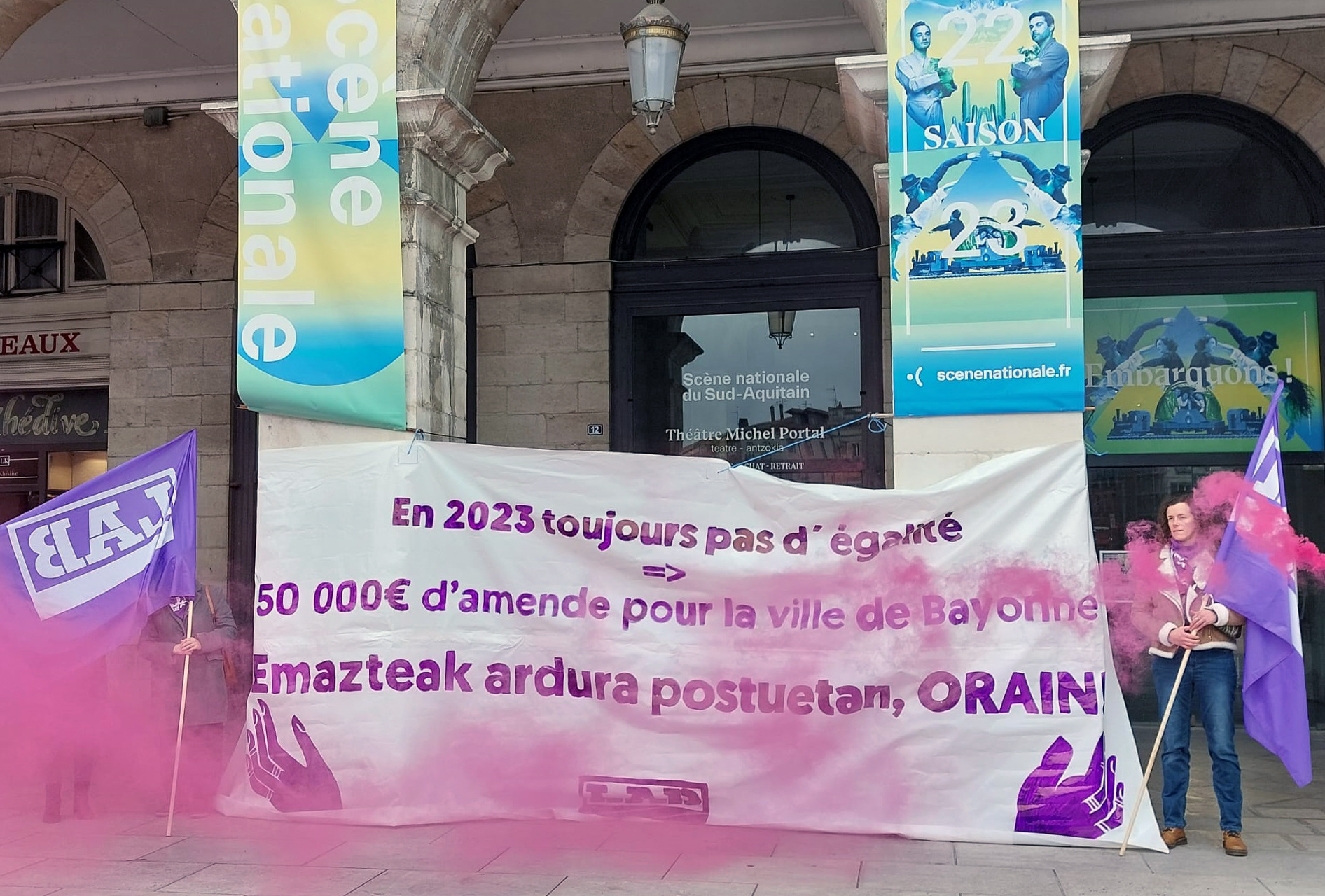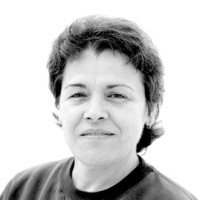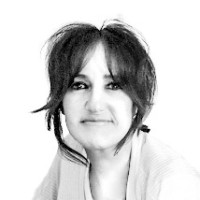The Iruña–Veleia case, science and judgment
On the occasion of the trial of the findings at the archaeological site of Iruña Veleia and of the recent judgment handed down, news has been published in the media that seriously blurs the reality of the facts. This distortion of reality has also gone beyond borders, two British newspapers of great circulation have published in a fake news that a geologist acknowledges that "the whole issue is nothing more than a mere tangle" and finds himself guilty of it. We note with concern how some media are failing, as they are entitled to do, to provide society with information based on truth.
With regard to the judgment, it should be stressed that he acknowledges that against the main defendant, the former excavation director Eliseo Gil, there has been no evidence, and that the penalty has been based on a few simple indications in its entirety, as well as that the judicial case remains unresolved after resorting to the sentence.
In addition to these judicial events, the Iruña–Veleia case has an aspect that most of society does not know, and that is science. In fact, when it has been presented in some media as a “gross falsehood,” the debate is actually very lively among experts from different areas who have not been able to clarify the truthfulness of the findings and which underpin the opposing views. And the existence of this debate has been demonstrated in the judgment itself, which states that “there are conflicting opinions between one and the other, which are the ones that take place.
"The debate is alive among experts from different areas who have not been able to clarify the truthfulness of the findings and who support the opinions opposed to them. And this controversy has been manifested in the judgment itself"
from scientific areas such as archaeology, linguistics, heading, etc., and “the debate among the experts who have been able to examine the pieces”. The fact that the Court recognises the existence of a scientific debate discloses the myth of “total scientific consensus” in favour of the falsehood that the Department of Culture of the Provincial Council of Álava (DFA) has spread in November 2008 – and that some media continue to blow with the truth. The reality is different, as experts from different areas (archaeology, epigraph, linguistics, history, Egyptology) have publicly exposed, through reports, scientific articles, books and conference presentations, their opinions and arguments on the veracity of the findings made in Iruña–Veleia. The court judgment has no effect on this dispute. Firstly, because the question of the courts is yet to be resolved, and secondly, because scientific issues must be resolved in the scientific forums of journals, scientific congresses and the like, and not, in any case, in the courts of justice. In fact, the judgment expressly refers to this issue, to the assessment of contradictory opinions existing “corresponding to the areas of archaeological science, linguistics, epigrammar, etc.”.
The analyses carried out by the Institute of Cultural Heritage of Spain (Institute of Cultural Heritage of Spain [IPCE]) on the 36 pieces excavated at the Iruña–Veleia site (more than 400 were found), led to the conclusion that the graphites had evidence of being made recently (to ensure these conclusions, it is based on the uncertainty of the age control graphites that are known with certainty). It is not our intention to conceal this. The consequences of these analyses have been those of the former director of the site, who has been condemned for having done the grafts “by himself or through a third party”. It cannot be ignored, however, that in the other three reports on physical analysis made available to the court by the prosecution and defence experts, as well as by the IPCE itself, the misrepresentation of the graphites has not been deduced. Therefore, it is clear that, despite physical analysis, there are discrepancies in the reports and testimonies of the experts.
However, there are no discrepancies regarding the age of the pieces found in Iruña Veleia, the origin of the Roman era has been explained by stratigraphic dating validated by two archaeologists of recognized international prestige, which no one has questioned and which have been admitted in the judgment. The arguments of the linguistic, epigraphical and physical analyses that demonstrate the incompatibility between the age of the graphites and these stratigraphic dates have been questioned by experts who believe that the graphites are compatible with the Roman era. We believe that the only way to resolve this debate will come from the field of science. For this reason, we ask the D.F.A., in charge of the custody of the pieces, to give the unprocessed specimens to the scientific community (by limiting the process to the 36 pieces considered false), to perform the necessary analyses to know the age of their graphites, to extract the conclusions and publish; that the pieces preserved in the Museum of Archaeology of Álava do not be cleaned, to make a video of the whole time.
If the Iruña–Veleia graphites were of Roman times (no one has released definitive proof of what is not of that time), they would offer an important knowledge of prehistoric Basque, of the development of the Latin to the Roma, and of the initial Christianity, so clarifying the debate about their age can be of great importance to our historical and cultural heritage.
Subscribe to the article:
Antonio Rodríguez Colmenero, Professor Emeritus in Ancient History at the University of Santiago de Compostela
Edward C. Harris, MBE, PHD, FSA, Executive Director of the National Museum of Bermuda, Creator Emeritus
Xabier Gorrotxategi Nieto, PhD in Archaeology
Luis Silgo, Doctor of History in the specialty of Archaeology
Noé Villaverde Vega, Doctor of Archaeology by European mention
Mikel Albisu, Bachelor of Geological Sciences
María Pilar Alonso, PhD in Language and Communication
Juan Martín Elexpuru, PhD in Basque Philosophy
Roslyn Frank, Professor Emeritus at the University of Iowa (USA)
Ulrike Fritz, Egyptologist at the Eberhard Karls Universität in Tübingen (Germany)
Alicia Satué, Bachelor of Classical Philology
Miguel Thomson, Scientific Head of Public Research Organisations
Koenraad Van den Driessche, PhD in Geology, Specialized in Geochemistry
Patxi Zabaleta, lawyer and writer, member of Euskaltzaindia
Bidali zure iritzi artikuluak iritzia@argia.eus helbide elektronikora
ARGIAk ez du zertan bat etorri artikuluen edukiarekin. Idatzien gehienezko luzera 4.500 karakterekoa da (espazioak barne). Idazkera aldetik gutxieneko zuzentasun bat beharrezkoa da: batetik, ARGIAk ezin du hartu zuzenketa sakona egiteko lanik; bestetik, egitekotan edukia nahi gabe aldatzeko arriskua dago. ARGIAk azaleko zuzenketak edo moldaketak egingo dizkie artikuluei, behar izanez gero.
Ukrainako gudaren amaierak ondorio sakonak ekarriko ditu Europa osora. Europako elite ekonomikoek beren indar guztia jarri dute guda-zelaian eta galdu egin dute. Galtzaileek, elite globalistek, beren egitasmo kuttuna galduko dute, Europako Batasuna, eta Bruselatik europar... [+]
Azterketak amaitzearekin batera ohikoak bihurtu dira ikasleriaren artean, urteko garai honetan merkeak diren hegaldiak hartu eta adiskideekin bidaiatzea. Horrela egin dut neuk ere eta Londresera joateko aukera izan dut. Ildo beretik, bertan “euskaldun” pilarekin egin... [+]
Ez dakit nondik hasi, egia esan. Ordezkoa naizen heinean –irakaskuntzan ikasturte gutxi batzuk daramatzat lanean– eskola ugari ezagutu ditut Nafarroa, Bizkai eta Araban zehar. Lankide izan ditudan irakasleekin euskal eskolak dituen gabezien inguruan hitz egiten... [+]
Alberto Martinez Eusko Jaurlaritzako Osasun sailburuak argi dio: ez ditu mediku euskaldunak aurkitzen, eta euskarazko osasun arreta ezin da bermatu mediku egoiliar (formazioan dauden espezialista) gehienak kanpotarrak direlako. Mediku euskaldunak bilatzea perretxikotan joatea... [+]
“Gogo eta gorputzaren zilbor-hesteak: bi kate. Bi kate, biak ebaki beharrezkoak: bat gorputzaren bizitzeko, bestea gogoaren askatzeko”. Hala dio Mikel Laboaren kantak; hala izan da belaunaldiz belaunaldi, egun arte.
Gogoan dut nire gurasoak askotan joaten zirela... [+]
Otsailean bost urte bete dira Iruña-Veleiako epaiketatik, baina oraindik hainbat pasarte ezezagunak dira.
11 urteko gurutze-bidea. Arabako Foru Aldundiak (AFA) kereila jarri zuenetik epaiketa burutzera 11 urte luze pasa ziren. Luzatzen den justizia ez dela justizia, dio... [+]
MAITE: (biharko eguna antolatzen bere buruaren baitan) Jaiki, gosaldu, bazkaria prestatu, arropa garbitu, etxea garbitu, gizon hori jaiki, seme-alabak jaiki, hiru horien gosaria prestatu, haiek agurtu, erosketak egin, lanera joan, seme-alabak eskolatik jaso, merienda eman,... [+]
Matxismoa normalizatzen ari da, eskuin muturreko alderdien nahiz sare sozialetako pertsonaien eskutik, ideia matxistak zabaltzen eta egonkortzen ari baitira gizarte osoan. Egoera larria da, eta are larriagoa izan daiteke, ideia zein jarrera matxistei eta erreakzionarioei ateak... [+]
“Kasu, ez gitxu lo!”. Gure denbora eta manerekin baina heldu gira.
Azaroaren 25ean Baionako elgarretaratzera joan ez joan eta autoak nola partekatu pentsatzetik (joan-jina bi oren), bat-batean Lartzabalen elgarretaratze bat antolatu genuen, eta 47 emazte bildu!... [+]
Nahiz eta Nazio Batuen Erakundeak (NBE) 1977an nazioarteko egun bat bezala deklaratu zuen eta haren jatorriaren hipotesi ezberdinak diren, Martxoaren 8aren iturria berez emazte langileen mugimenduari lotua da.
Aurrekoan, ustezko ezkertiar bati entzun nion esaten Euskal Herrian dagoeneko populazioaren %20 atzerritarra zela. Eta horrek euskal nortasuna, hizkuntza eta kultura arriskuan jartzen zituela. Azpimarratzen zuen migrazio masifikatua zela arazoa, masifikazioak zailtzen baitu... [+]
Ez dut beti ulertzen nola aritzen ahal diren lur planeta honetako zati okitu, zuri, gizakoi eta kapitalistako aho zabal mediatikoak, beraiena, hots, gurea, zibilizazioa dela espantuka. Berriak irakurtzen baldin baditugu, alta, aise ohartuko gara, jendetasuna baino, barbaria dela... [+]
Administrazioko hainbat gai, LGTBI+ kolektiboko kideen beharrizanak, segurtasun subjektiboa, klima aldaketa, gentrifikazioa, ikus-entzunezkoak erabiltzeko modu berriak, audientzia-datuak jasotzeko moduak, dislexia, ikuspegi pedagogiko aktibo eta irisgarriak, literatur... [+]
Auzitan jar ez daitekeen baieztapen orokor eta eztabaidaezinaren gisan saldu digute hizkuntzak jakitea printzipioz ona dela, baina baditu bere "ñabardurak", edo esanahi ezkutuagokoak. Hemengo ustezko elebitasun kontzeptuaren azpian dagoen baina kamuflatzen den... [+]
Otzandu egin gara, katalanak eta euskaldunok, ekaitzaren ondoren. Saiatu ginen, bai; sendo ekin genion, eta gogor kolpatu gaituzte; ezin izan genien gure helburu zuzen, ezinbesteko, sakratuei eutsi. Eta porrotaren mingostasuna dastatu dugu, eta bigundu egin gara irabazleen... [+]













